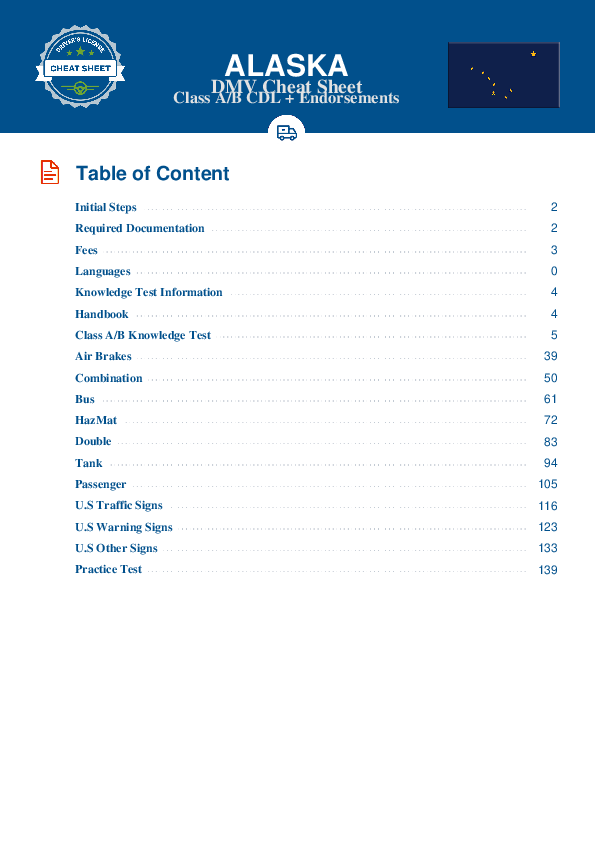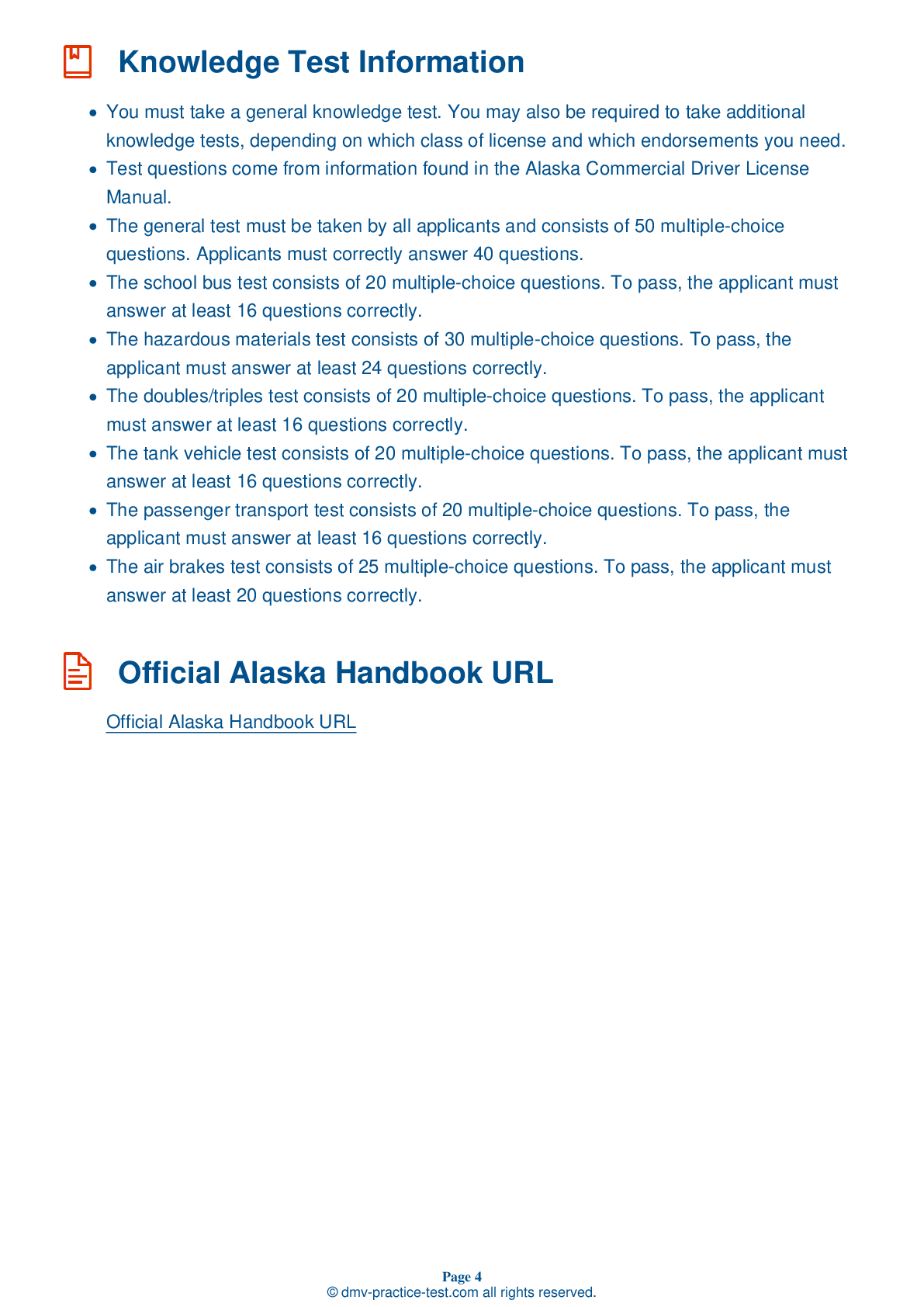Class B Driving Test | Alaska 2025 #2 Page 2 of 7
Train for FREE online with our Alaska class B license test. The official exam test consists of several obligatory parts, with all of them checking your knowledge of different blocks of road rules. If you need to obtain a AK CDL class B permit in 2025, practice as much as possible. Free sample tests published on our website will help you check and improve your knowledge and boost your grades. Please bear in mind that CDL class B requirements may vary from state to state.
8 . Placards should be used:
Warning placards are required to be used any time a vehicle is carrying designated types and amounts of hazardous materials. A placarded vehicle must display placards on all four of its sides.
9 . A fatigued driver:
Fatigued drivers are slower to see or react to hazards than drivers who are not fatigued. Drivers are impaired in their ability to make critical decisions when they are driving drowsy.
10 . A low air pressure warning signal should activate:
In an air brake system, a low air pressure warning signal must come on if air pressure in the tanks falls below 55 psi. This warning signal may come in the form of a light, a buzzer, or a wig wag.
11 . Black ice is:
Black ice is a layer of ice that is thin and clear enough for the road to be visible through it. The surface will look like a wet road. Always be alert to black ice if the road looks wet when the temperature is below freezing.
12 . How long should it take for oil pressure to reach a normal level when starting a vehicle?
After starting a vehicle's engine, the oil pressure should come up to a normal level within seconds. Do not operate a vehicle if it has oil pressure that is low, dropping, or fluctuating.
13 . What does blocking cargo do?
Blocking and bracing are used to prevent cargo from shifting in transit.
14 . If you must drive in reverse, using driver's side backing:
If you must back up, it is safest to back toward the driver's side of the vehicle. This way, as the driver, you will have the best possible view of your path of travel.
See the exact questions that will be on the 2025 Alaska DMV exam.
99.2% of people who use the cheat sheet pass the FIRST TIME
Lillian MCcranie explains how our CDL study guide was helpful in passing the exam and recommends it to everyone.
Cameron tells us how he purchased the CDL exam, and found it to be a useful tool which helped him pass the exam and find a job.



